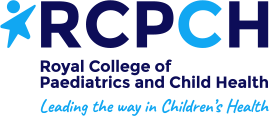Creative Health Blog
Does Creative Health activity with children and young people measure up? By Martin Wilson
As the Arts & Creativity Advisor for the network, I am constantly advocating the powerful role creative health activities—such as arts, music, dance, drama, and storytelling—can play in supporting young people’s well-being.
From supporting mental health through to building confidence and improving social skills, Creative Health activities have the power to transform young people’s lives, but without measuring their impact, do we risk undervaluing their potential?
I have always been a big believer that measuring impact and understanding the difference an activity or intervention has made is crucial, not just to prove effectiveness but also to help us to improve how we may deliver an activity in the future or to support the case for future funding.
I was recently part of a network huddle that brought together a range of different people from various sectors to share and exchange thoughts on ways to show the impact of creative health for children and young people.
It was a really engaging conversation and if you would like to catch-up with what was presented and discussed, you can do so by watching back the recording of the ‘lunch and learn’ session:
Attending the huddle, it struck me that there is a great breadth and wealth of Creative health activity happening in schools and community settings across our region. But whilst I feel I have a fairly good awareness of what is happening, it is not so easy to find out what the effects and impacts have been of much of this work. What I do acquire in terms of understanding, I often receive anecdotally. Rarely is the impact documented or shared in a way that could be considered ‘robust' or ‘grounded in evidence’.
So how might more creative health activities build an evidence base and do this in a way that is sustainable and affordable?
As part of the Lunch and Learn, there were a range of methods shared and discussed which, to me, felt relatively easy to achieve and could result in powerful effective data illustrating impact.
These included gathering structured feedback before, during, and after participation through surveys and interviews; generating individual stories as case studies; drafting simple scales to measure changes in confidence, mood, and social engagement or even keeping it ‘creative’ by using drawing, photography, or performance to reflect on experiences.
I am sure there are many more ways to approach gathering the data that can illustrate the ‘change that happened’ but the key consistent elements that can be connected to any method are that it is considered, planned, takes place, is reflected upon and ultimately the findings are shared.
And whatever the approach or the method, it all matters and can help make the case for more Creative Health activities.
Having the evidence at hand that shows impact and can be shared widely is crucial. It makes learning and the resultant benefits tangible. It elevates conversations and discussions about the potential for greater investment. It can offer a voice to those who participated and the ammunition for those who led to do more.
Ultimately, we all benefit as the body of evidence that illustrates the positive benefits of Creative Health grows and we can collectively advocate a future where Creative Health is at the heart of our engagement work with children and young people.
By the way, if you are a school engaging in creative health or a cultural organisation delivering creative health activities in a school setting and as a result of the activity you have impacts you want to share and a chance to tell your story, why not check out the Chris Drinkwater Creative Health in Primary Schools Awards. Applications close on the 7 March so act swiftly!


